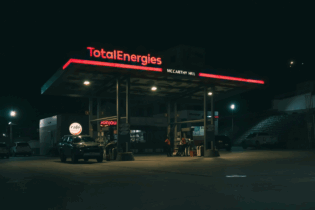Pictured: Chris Barry
Chris Barry, Managing Director of Heavy Commercial Vehicle Underwriting Managers (Pty) Limited © HCV tells Transport World Africa why there are flaws in the licensing system. During a recent performance review of one of our less-qualified staff members, we asked him whether he had attained the driver’s license he said he was aiming to get the year before. To get the license would have involved writing his learner’s license, completing driving lessons and successfully passing the driver’s test – something that could be reasonably attained within six to twelve months. When asked if he had managed to complete his license as intended, he confirmed that he had. We enquired as to when his license had been issued and he proudly told us, “On the 16th of June last year.” The gaffe was clear – considering that June 16 is Youth Day and a public holiday. The license had obviously been bought. This incident bought the issues that HCV perennially fights against, very close to home. In our business we are acutely aware of the flaws in the licensing system, corruption in the roadworthy centres, the general failure of the eNatis system and the problem of job creation in the transport sector. In the current situation, considering how easy it is for people to just pay a “fee” to obtain the necessary documents, all administrative processes such as roadworthiness and licensing are essentially “punishing” those who dutifully pay the applicable fees, book the relevant tests and complete the correct processes. Yet it is those people who follow due-process who end up bearing the brunt of the carnage on our roads and the R157 billion in road accidents that happen every year (according to the AA). It’s all in the training It is also becoming apparent that government is both unwilling and unable to address such issues. But, I have a few ideas – and they all start with training. Allow me to set the scene: In SA there are 398 licensing centres and 273 roadworthiness centres. Taking some ‘cigarette box’ numbers (since the numbers are not easy to find) for the transport sector, amongst the big listed truck and motor groups, there are over 20 000 trucks, over 500 dealerships, over 200 000 employees and revenue of over R200 billion.If training was provided to one out of 10 employees and government chipped in a double deduction training allowance, it would be a win-win situation. The employer would receive a four-year tax write-off benefit which essentially brings a new employee into the tax base for an average career-span of 40 years.
This means a training program of four years can essentially create a taxpayer for forty. I fail to understand why this kind of thing hasn’t been exploited before. Win-win If we stick with the figure of one trainee driver in ten, it would equate to 2 000 newly trained drivers each year. If trainee truck drivers earn about R10 000 a month, it would mean that on an annual basis it would equate to R240 million – which the large motor groups would get as a tax deduction. This is the equivalent of 0.12% of the turnover of those groups. Let’s consider another example. If each of the 500 dealerships have ten mechanics and one apprentice, again at an average salary of R10 000, that would be R60 million per annum. That figure could, again, be totally tax deductible and represents just 0.03% of the total revenue base. Lastly, consider my minimum estimation of 500 dealerships in the country, and 273 roadworthiness centres – this translates to a ratio of two dealerships to each roadworthiness centre. If the dealerships could take over the RWCs and run them as proper businesses, with profit margins, best practice and trained employees, it would solve the problem of corruption, improve standards and make it significantly more difficult to simply “buy” a roadworthiness certificate. Our government waxes lyrical about the importance of public and private partnerships, yet the most obvious ones in the transport industry are being missed.







